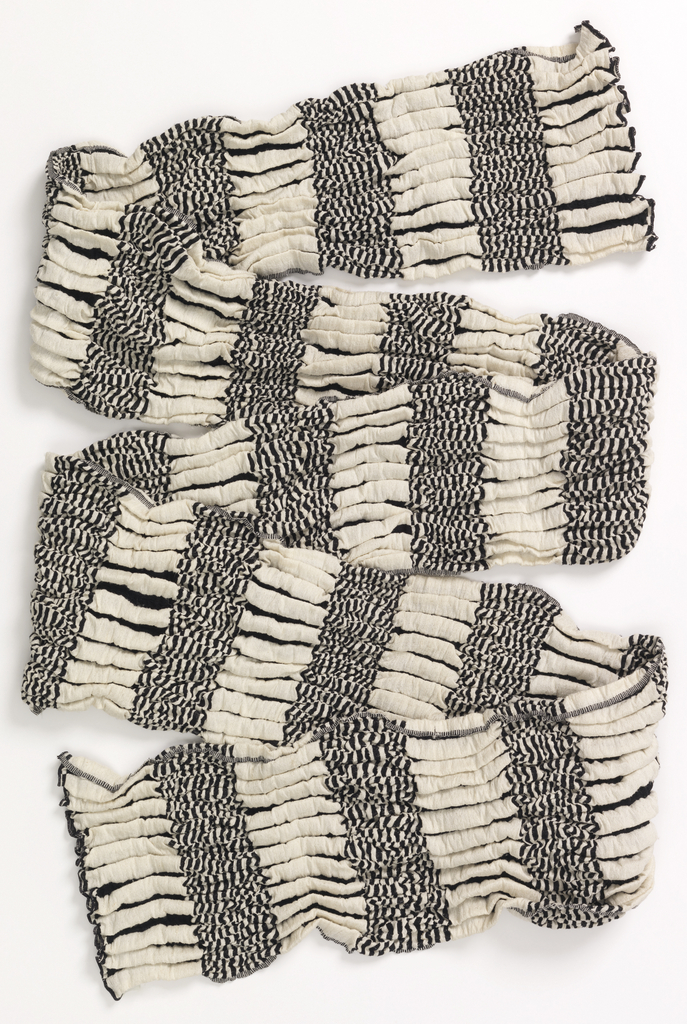Resourcefulness has been a key component of Japanese life for centuries, and in design, one sees this most dramatically with materials and objects being repurposed, recycled, or reused. The Japanese textile company, Nuno, founded in 1984, is constantly striving to integrate this ecological approach while continuing to create some of the most technologically innovative and beautiful contemporary textiles anywhere in the world. Futsu Crisscross represents one of their newest works, which is part of a series using kibiso (an industrial waste product) and raw silk. The combination reveals the rich texture, structure, and surface design that can be obtained from these two very different materials.
Kibiso is the protective outer layer of the silk cocoon which is “wiped off” and discarded in order to reach the finer silk fiber underneath. Ultimately kibiso helps to protect the silkworm, but because it is a natural amino acid, it has also been used by other industries in pet foods and cosmetics. Nuno is experimenting with “upcycling” (where waste products are used to make something of greater value) kibiso to produce textiles which have special qualities, such as filtering UV rays, natural moisture, etc.
As important as the upcycling is the “reusing” of retired silk weavers, whose skill and knowledge of the silk hand-weaving process has almost been lost, but which is essential to the making of these kibiso textiles. The nature of the fiber prohibits it from being used on power looms and the fiber has to be split by hand in order to be machine loomed. Nuno is particularly proud that they have simultaneously kept the elder weaving community actively involved in the local industry while making extraordinary textiles out of waste silk.
